A stone porch can instantly elevate your home’s curb appeal, offering durability, timeless beauty, and a unique texture that complements various architectural styles. From natural flagstone floors that create a seamless link to the surrounding landscape, to handcrafted stone columns that frame your entryway with rustic charm, there are countless ways to incorporate stone into your porch design. Whether you prefer the rugged appeal of river rock, the refined elegance of limestone slabs, or the contemporary mix of stone and metal accents, each idea below provides inspiration for crafting a welcoming outdoor space that reflects your personal style and stands the test of time.
1. Flagstone Flooring
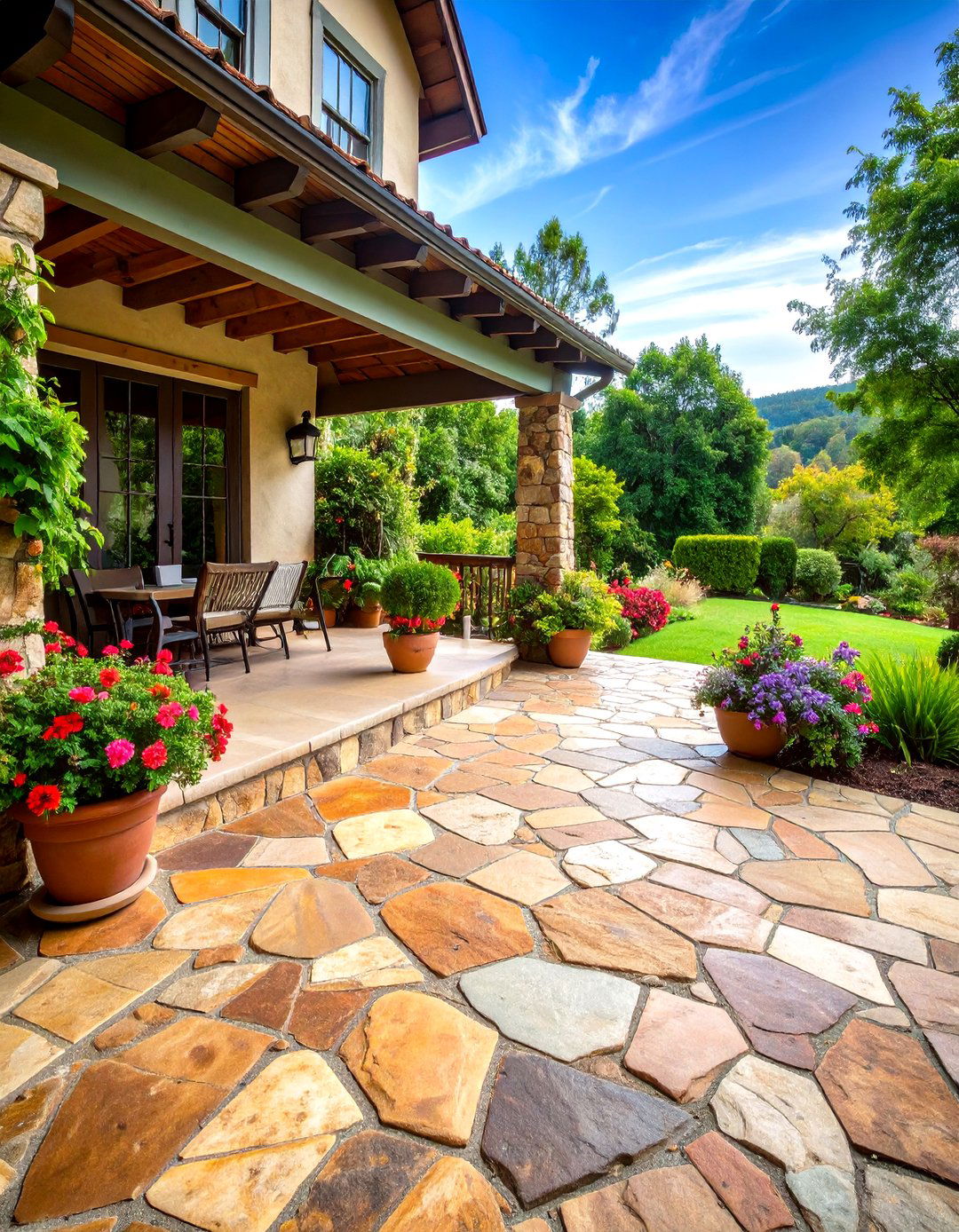
Flagstone is a classic choice for porch flooring thanks to its irregular shapes and natural hues, which blend beautifully with outdoor settings. Available in slate, sandstone, and limestone variations, flagstone offers a slip-resistant surface ideal for high-traffic areas. Install pieces in a tight “crazy paving” pattern for a rustic look, or opt for uniform slabs for a more refined appearance. With minimal maintenance—periodic sealing and occasional joint re-sanding—flagstone floors remain both functional and eye-catching for decades.
2. Stacked Stone Columns

Framing your porch with stacked stone columns adds architectural interest and a sense of solidity. Whether built from thin stone veneer or full-height natural blocks, these columns can support structural elements like beams and roofs while introducing warm earth tones and varied textures. Pair stacked stone with timber beams for a craftsman-style porch, or use matching stone for both columns and façade for seamless cohesion. Thin veneer options simplify installation and reduce weight, making this design accessible to DIY enthusiasts.
3. Natural Stone Steps
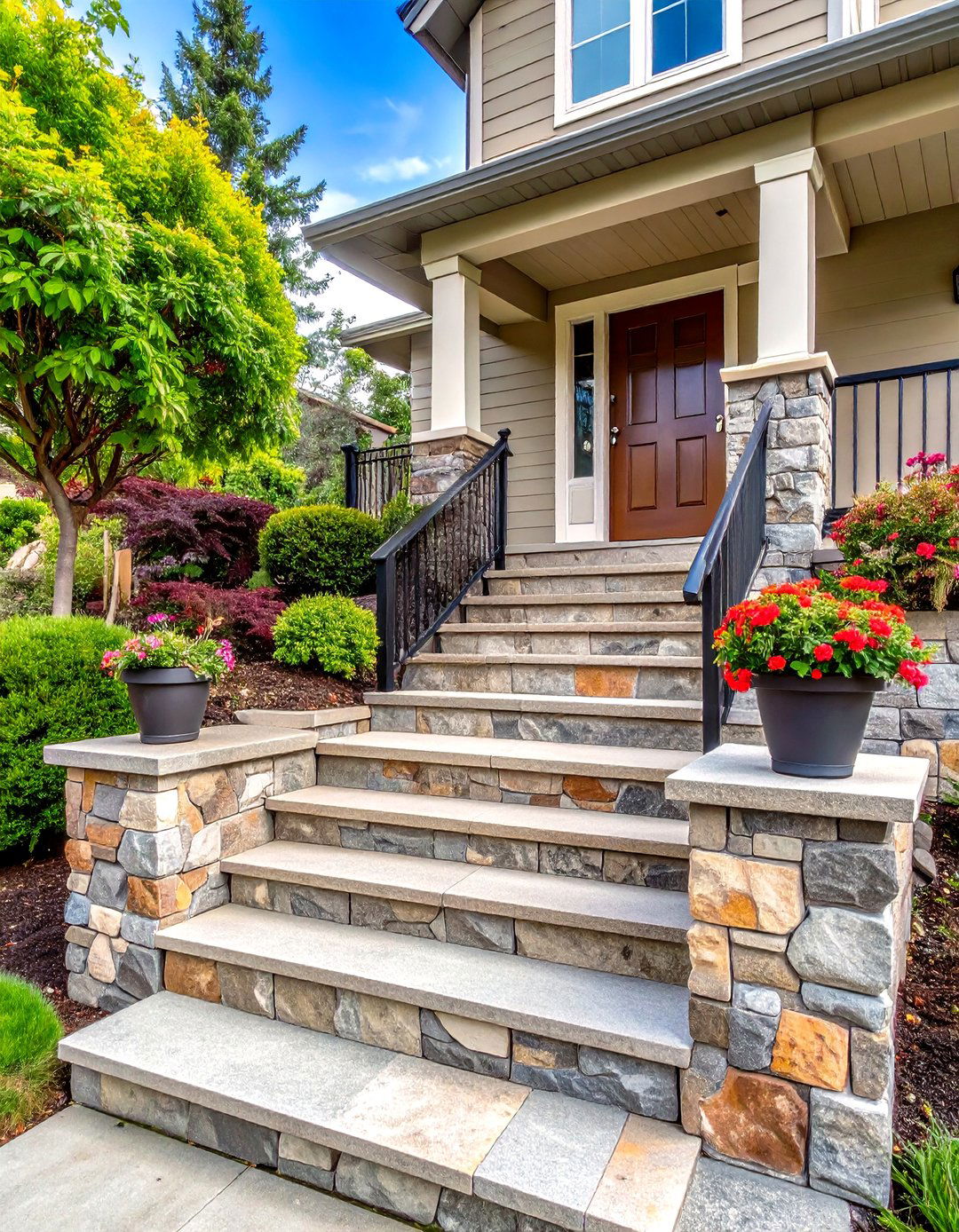
Stone steps leading to your porch instantly lend an organic transition from garden to entryway. Choose durable materials like granite or bluestone, which withstand weathering and maintain crisp edges. For a softer profile, opt for tumbled or honed finishes on sandstone or limestone slabs. Incorporate riser stones that contrast with tread surfaces to highlight each step, and flank the staircase with low stone walls or planters to frame the ascent and enhance safety. Proper base preparation ensures stability and prevents settling over time.
4. Stone Veneer Accent Walls
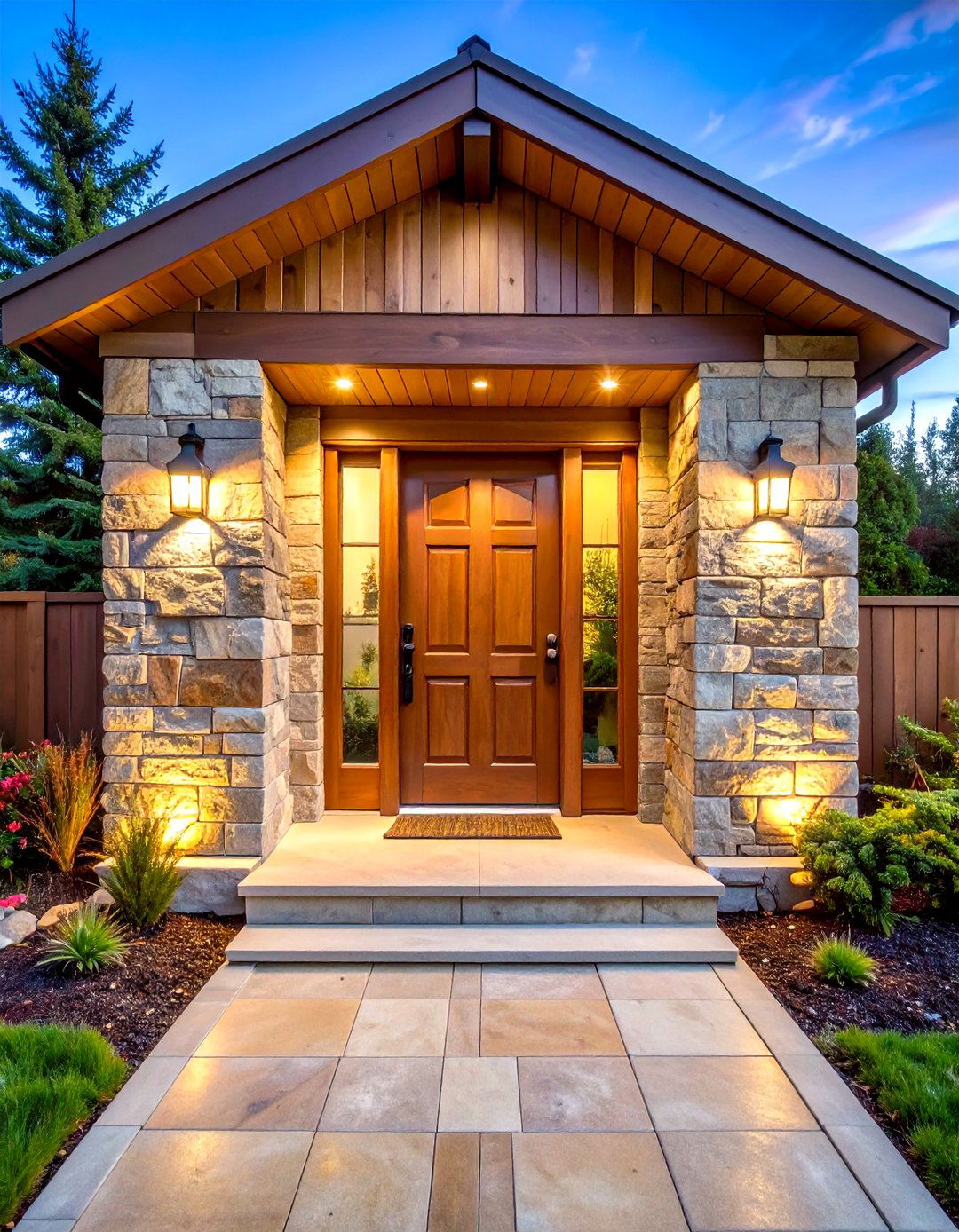
Enhance one wall of your porch—such as around the door or beneath windows—with a thin stone veneer accent that adds depth and texture without the cost of full-thickness masonry. Veneers come in modular panels or individual stones, enabling creative layouts from horizontal courses to random ashlar patterns. Lighter-weight fiberglass-backed panels are available for easier installation, while natural stone veneer offers unparalleled authenticity. Accentuate with up-lighting to cast dramatic shadows and highlight the stone’s texture in the evening.
5. Rustic River Rock Flooring
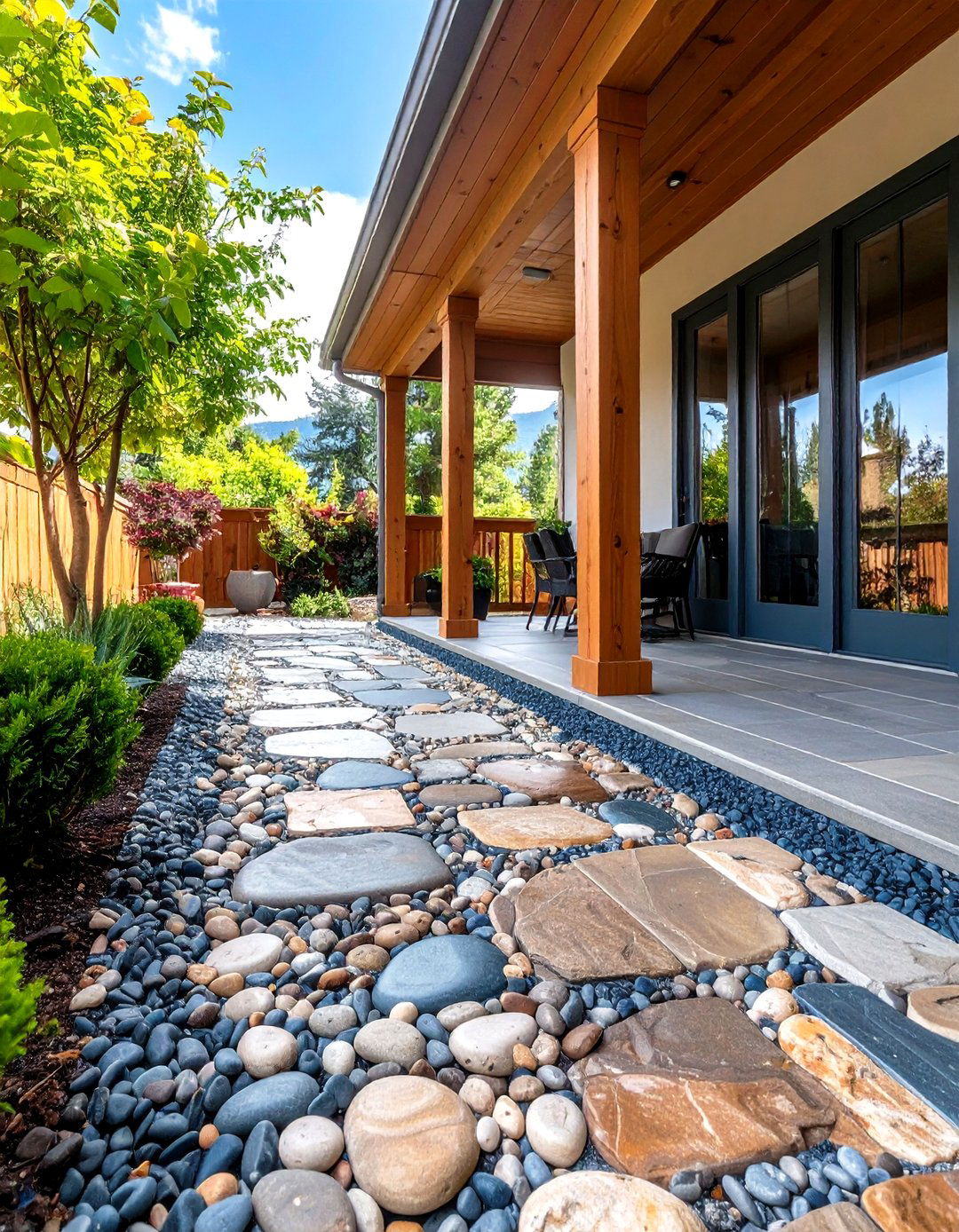
For a cottage-like or mountain retreat vibe, river rock flooring weaves smooth, rounded stones into a stable, mortar-set surface. The pebble textures provide gentle foot massage benefits and excellent slip resistance. Use contrasting grout colors to make each pebble stand out or blend grout to let the stones’ natural hues shine. River rock designs work well under covered porches where occasional wetness won’t freeze, and can serve as a focal point amid simple wood or metal railings.
6. Stone and Wood Combination
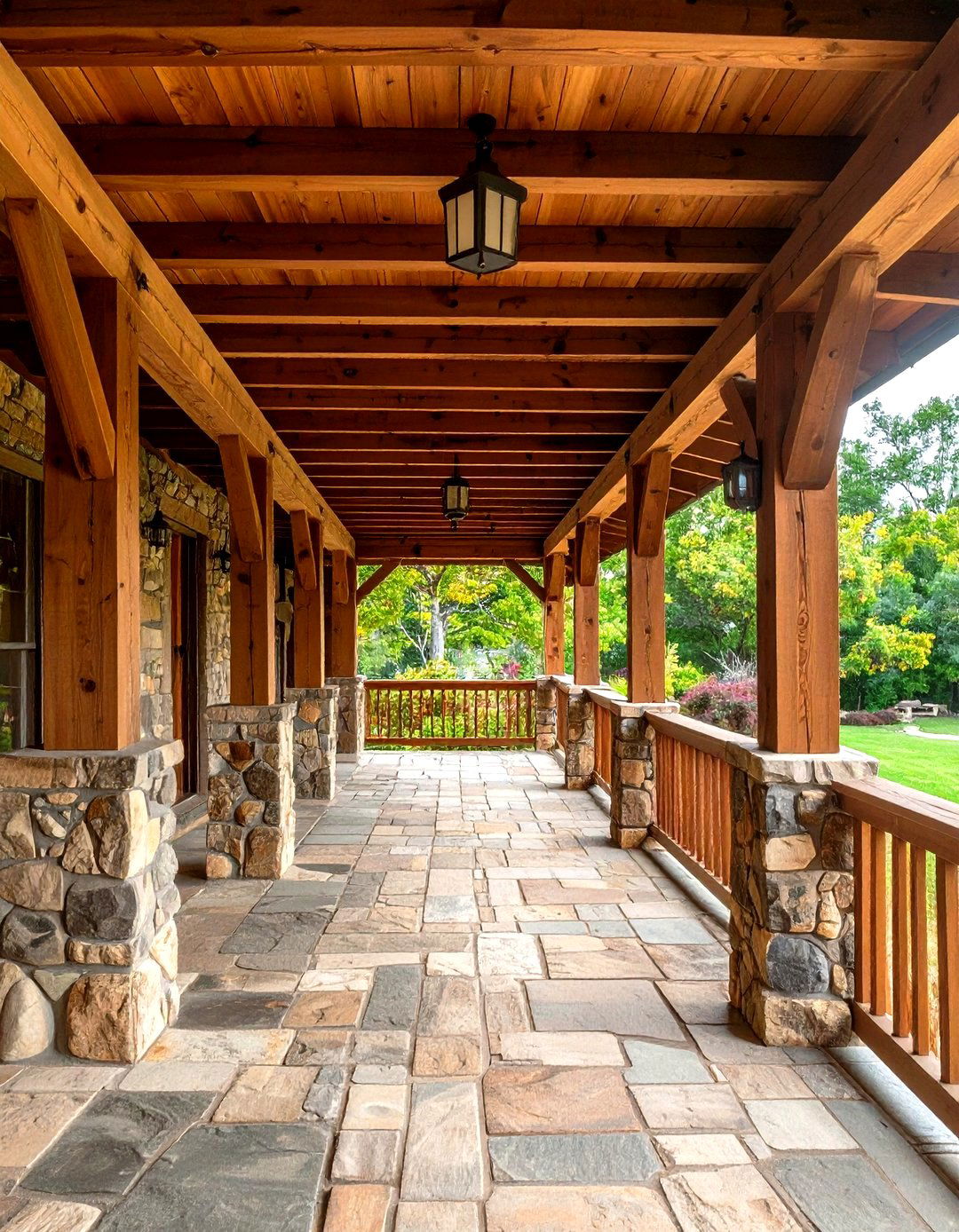
Marrying stone with wood beams, ceilings, or railings creates a balanced, inviting aesthetic. Exposed timber rafters atop stone columns evoke a craftsman look, while wood-plank ceilings paired with a stone floor add warmth and texture. Dark-stained hardwoods contrast beautifully against light-colored stone, and integrating wooden furniture or a porch swing ties the elements together. This combination extends interior design themes outdoors, fostering a seamless flow from home to porch.
7. Cobblestone Pavers
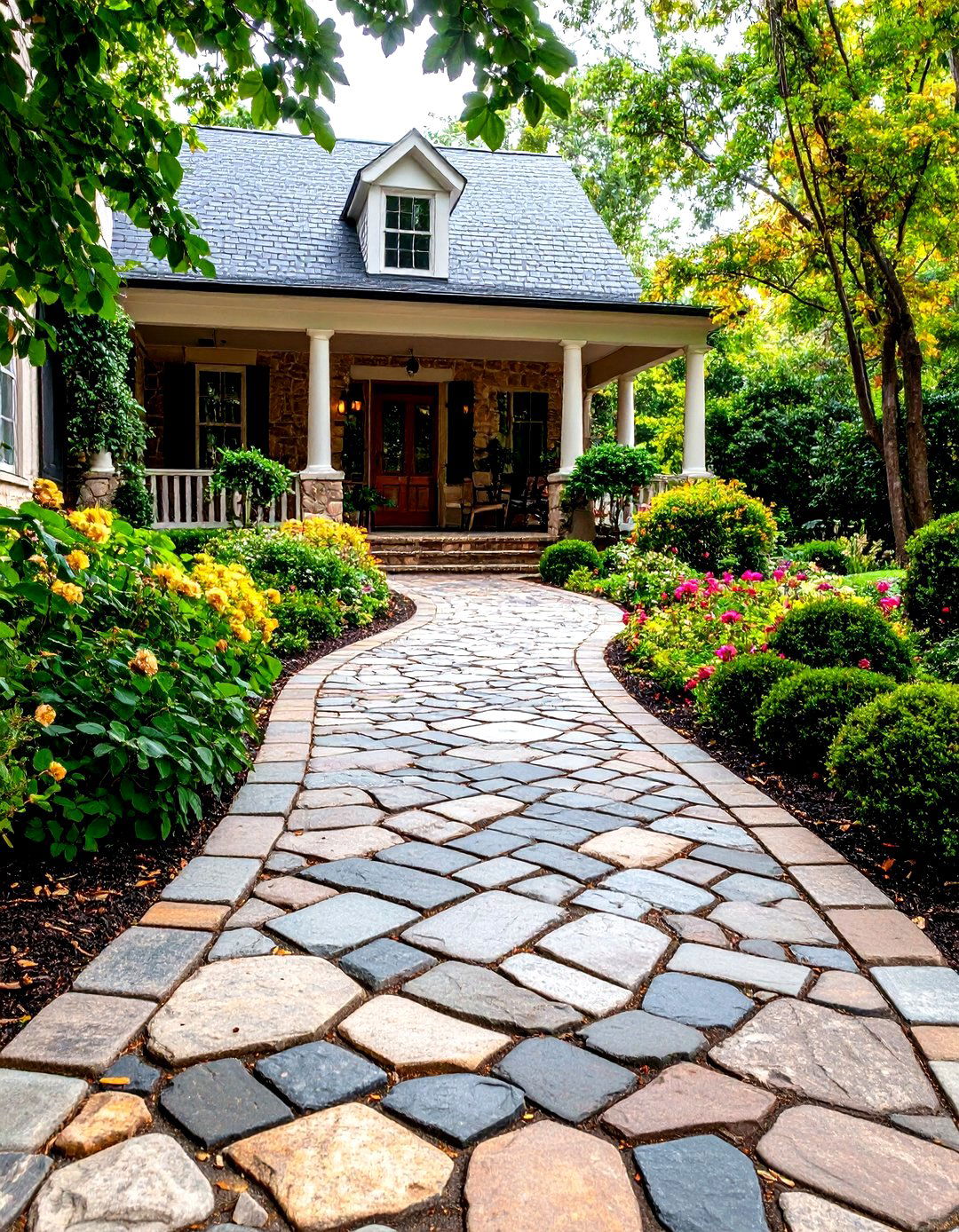
Cobblestone pavers—small, uniformly cut stones set in sand—offer a formal, Old World charm. Available in granite, basalt, or limestone, cobblestones can be laid in herringbone or basketweave patterns for visual interest. Their rounded edges soften over time, enhancing the porch’s character. Cobblestone surfaces require limited upkeep, and individual stones can be replaced if damaged. The slight unevenness also promotes water drainage, reducing pooling risks.
8. Limestone Slab Porch
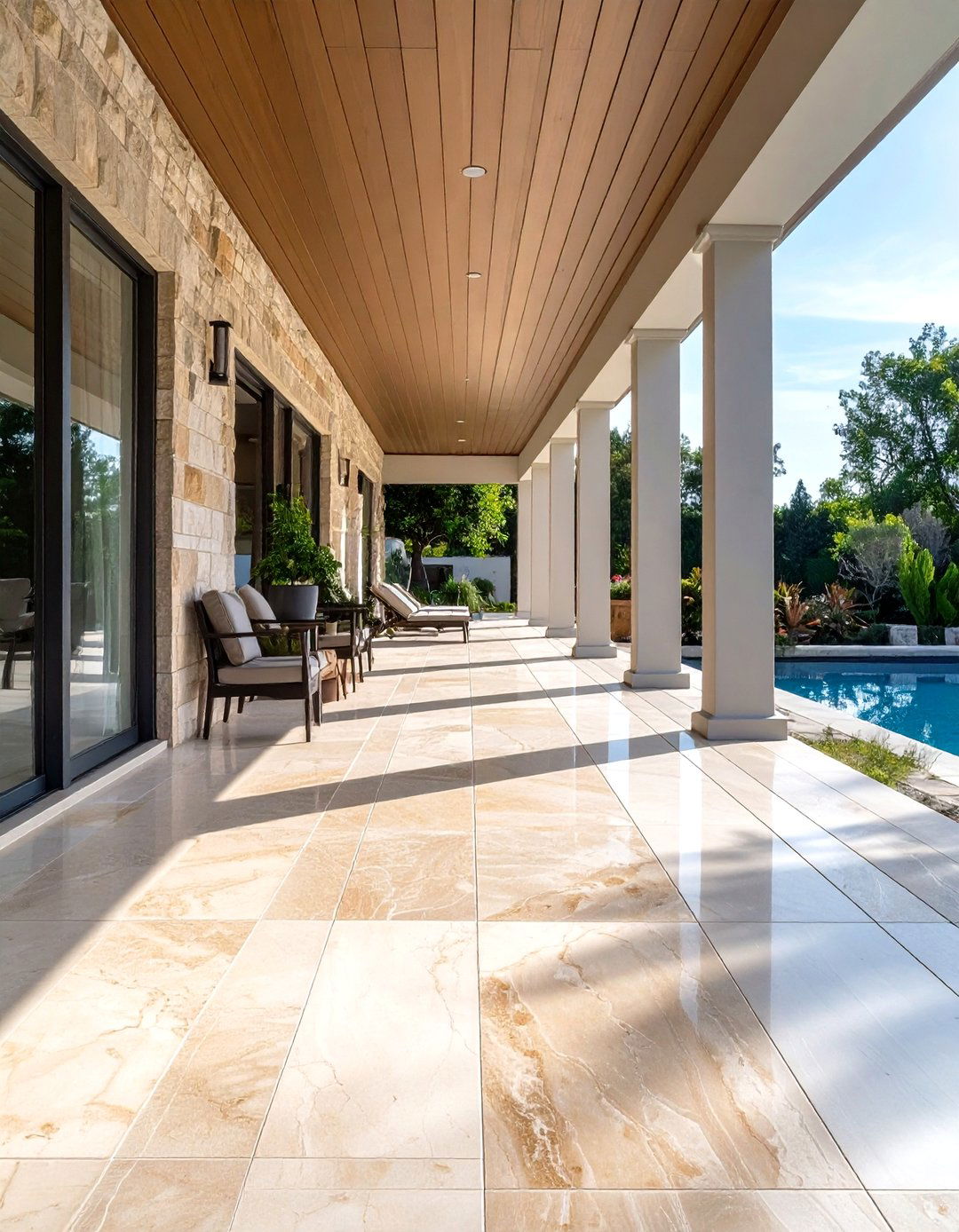
Limestone slabs provide a refined, limestone-white canvas for your porch floor. Heat-resistant and slip-resistant, limestone stays cool underfoot, making it ideal for sunny climates. Its subtle veining and soft color variations contribute to a sophisticated palette. Pair limestone slabs with dark mortar joints for crisp definition or grout-matched lines for a seamless look. Regular sealing protects against stains and maintains the stone’s natural vibrancy over time.
9. Sandstone Patio Extension
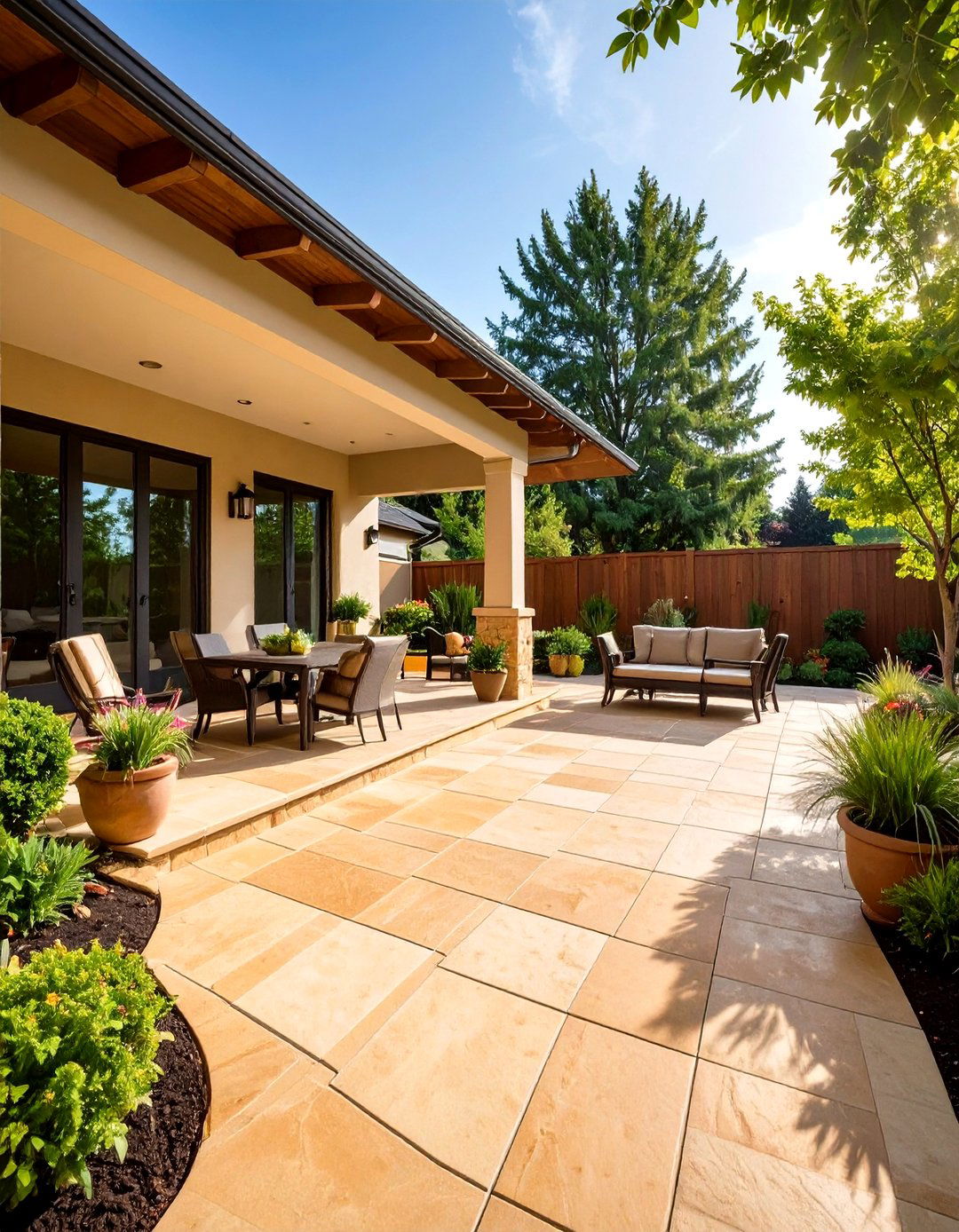
Extend your porch into the yard with sandstone pavers that tie the patio and porch flooring together. Sandstone’s warm tones—from golden buff to rich red—complement greenery and wooden accents. For a handcrafted feel, choose cleft-face finishes that emphasize the stone’s stratified layers. Be sure to install a proper base of compacted gravel and sand to prevent shifting. Integrating a low stone retaining wall around the extended patio creates seating opportunities and defines the space.
10. Pebble Border Detailing
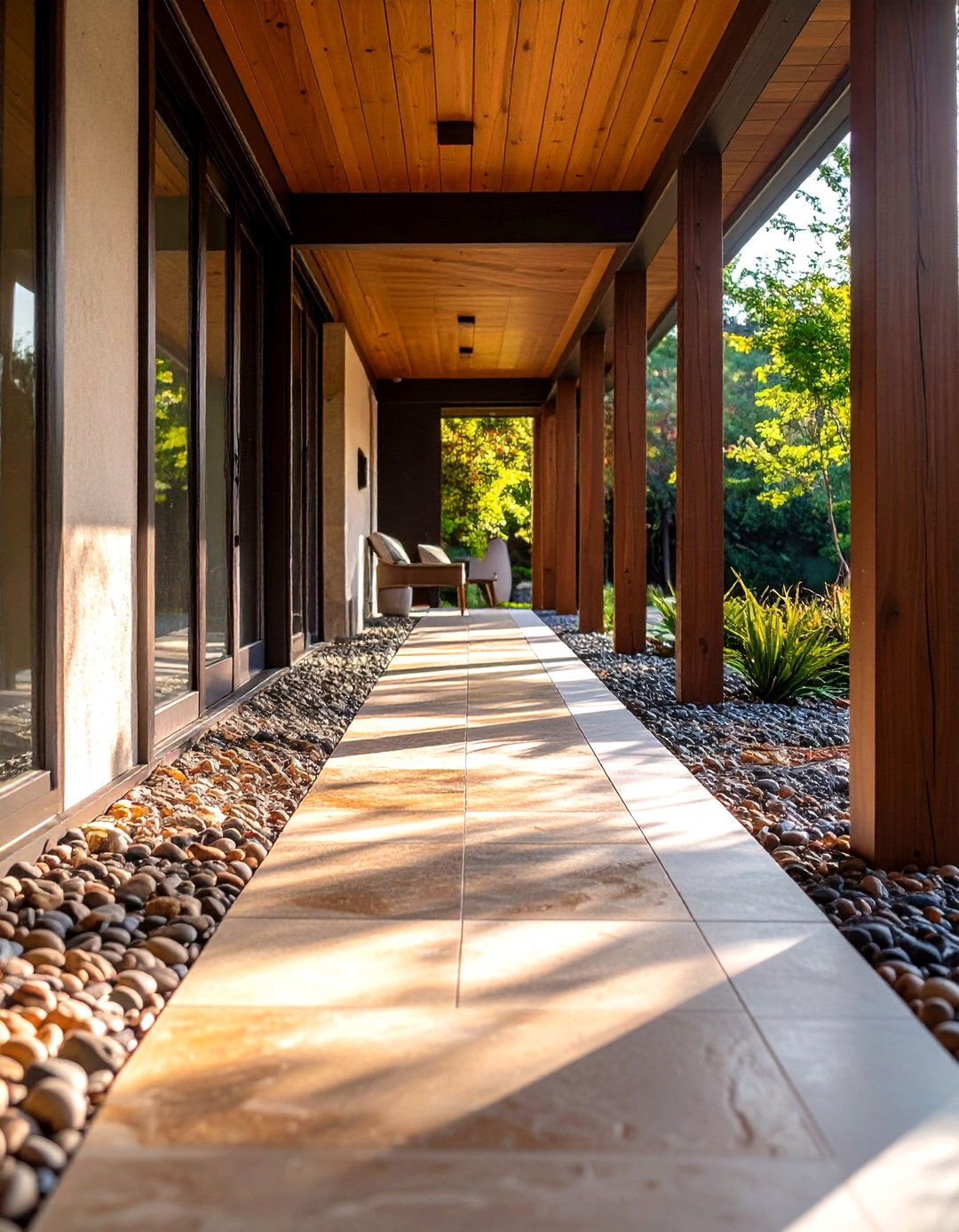
Frame your primary porch stone flooring with a narrow pebble border to delineate areas and add subtle texture contrast. Use river pebbles or polished beach stones set flush with the primary stone field. Borders can follow straight edges or flow organically around curves and stairs. The inset pebbles create a delicate transition between materials and help conceal grout lines. This detailing elevates simple slab or flagstone porches into bespoke showcases.
11. Granite Staircase
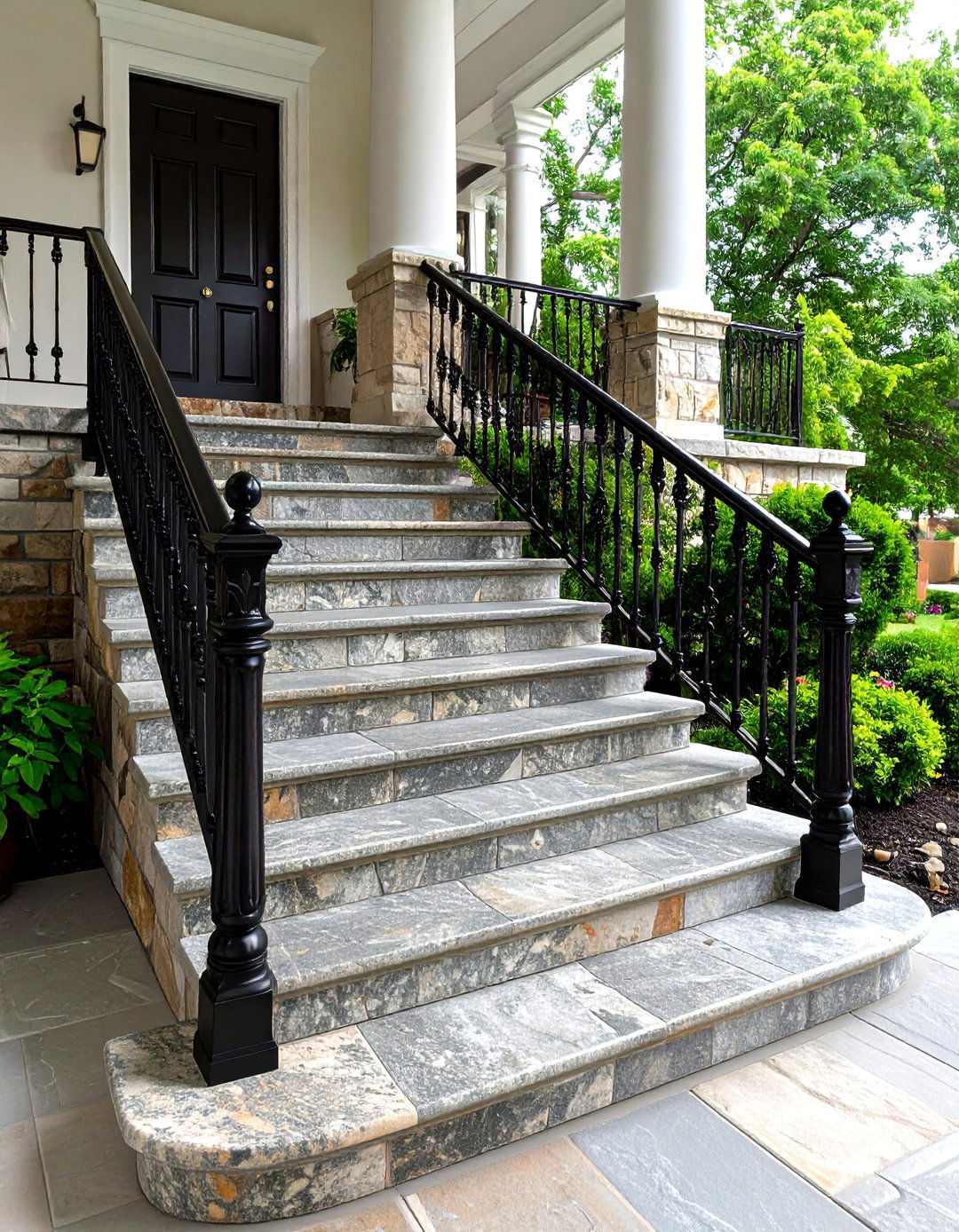
Granite offers unparalleled strength for porch stairs, resisting chipping and scratching in high-traffic zones. Its crystalline structure sparkles subtly, adding elegance under direct sunlight. Available in polished, honed, or flamed finishes, granite steps can match or contrast with porch flooring. Consider nosed edges for safety and a refined silhouette. Granite also pairs well with wrought-iron railings or stone-clad walls for a stately entrance.
12. Multicolored Quarry Tiles
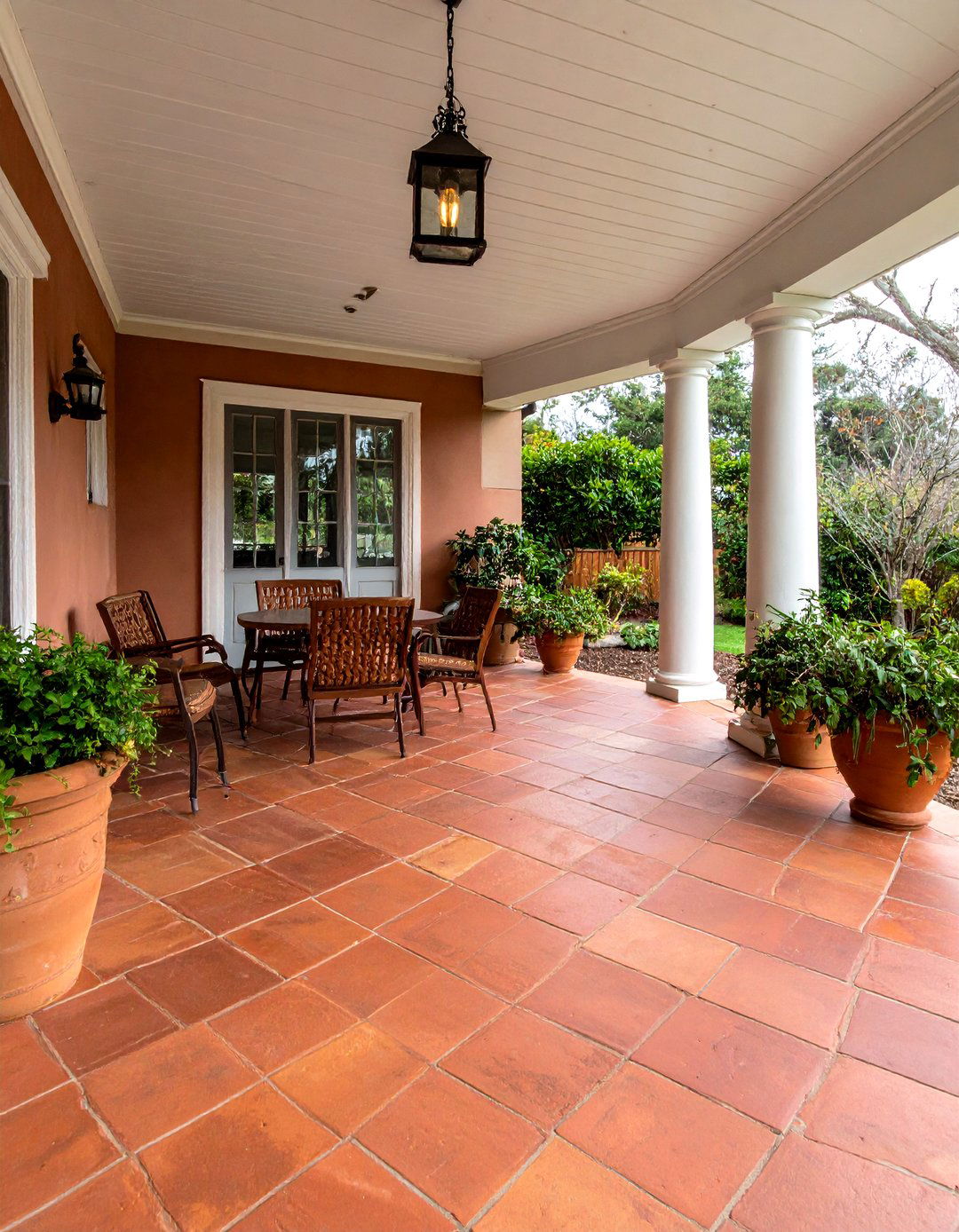
Quarry tiles—a mix of clay and shale—bring earthy reds, rusts, and browns to your porch. Their natural color variations create a warm, inviting floor. Quarry tiles are durable and low-maintenance, suitable for covered porches. Lay them in diamond patterns or straight grids, and use contrasting grout to accentuate each tile. These tiles pair beautifully with stone columns or a stone-clad façade, tying the entire porch design together.
13. Cholla Beige Flagstone
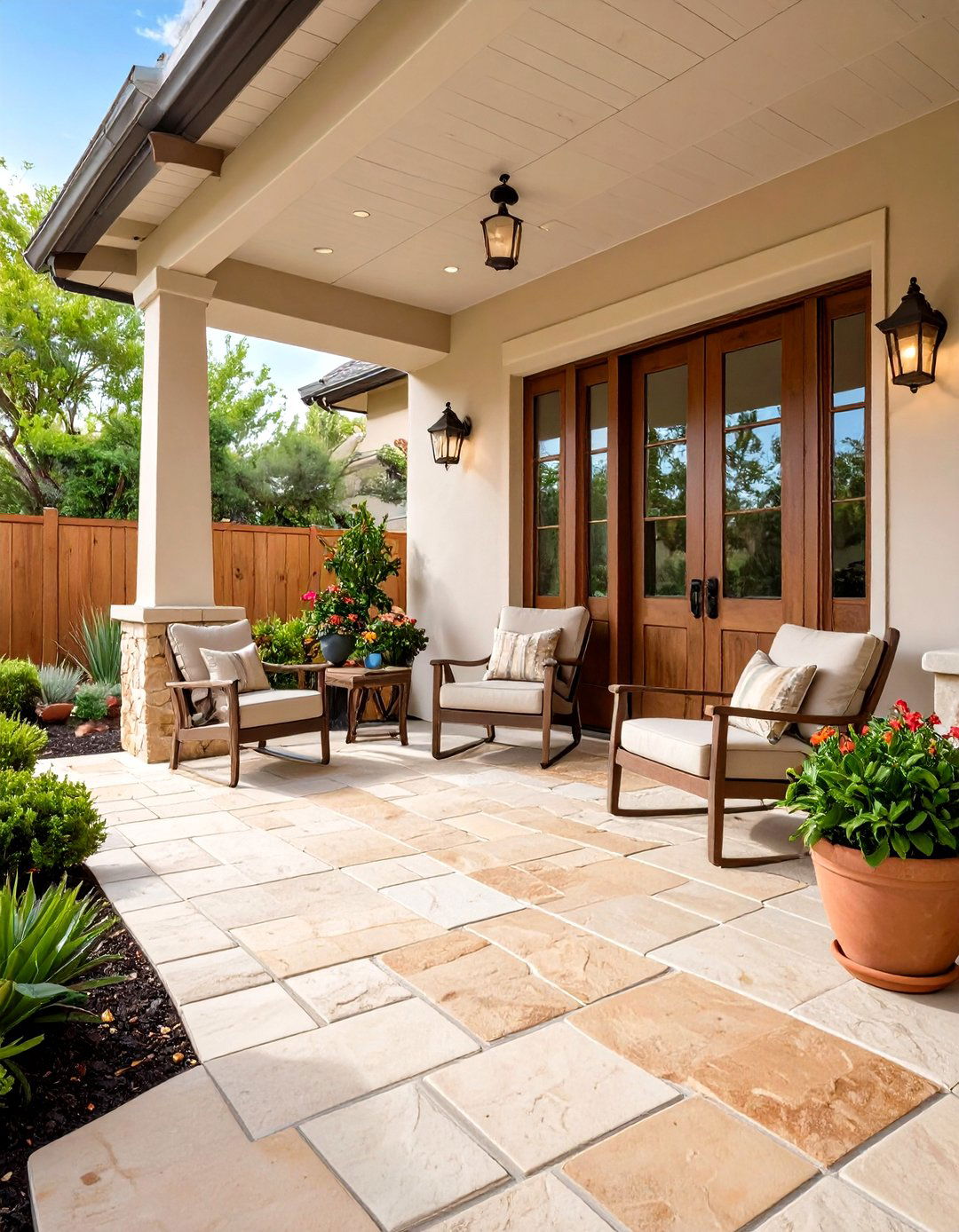
Cholla Beige flagstone’s textured surface and neutral palette offer a lived-in, weathered look that feels immediately welcoming. Its durability withstands freeze-thaw cycles, making it suitable for various climates. Install in a random ashlar pattern and finish joints with mortar for a cohesive appearance. Cholla Beige works particularly well alongside natural wood elements and greenery, enhancing a rustic yet refined porch aesthetic.
14. Faux Stone Panels
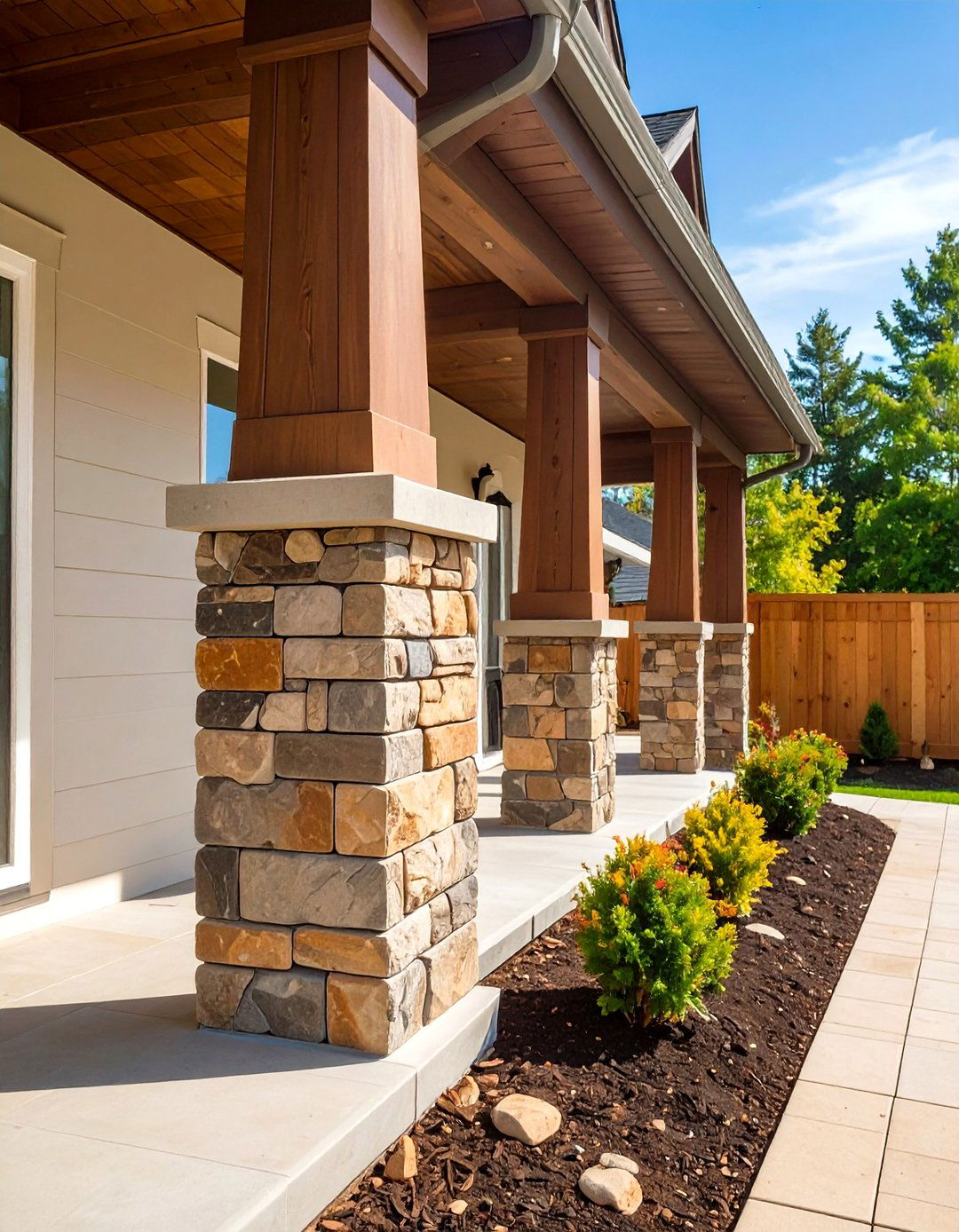
For a budget-friendly alternative, faux stone panels replicate real stone’s appearance with lightweight polyurethane or cement composites. Panels click or adhere to existing surfaces, reducing labor and installation time. They’re ideal for DIY projects and can cover entire porch walls or columns. High-quality panels offer UV resistance to prevent fading and resist moisture for longevity. Seal edges promptly to prevent water infiltration behind panels.
15. Stone Fireplace Feature

Adding a stone-clad fireplace to an expansive porch transforms it into an inviting year-round retreat. Use full-bed natural stones or veneer around the hearth and chimney breast, extending to the ceiling or beam line for dramatic effect. Incorporate a raised hearth for additional seating, and choose stones that echo the porch flooring for continuity. Install gas logs for ease of use, and add ambient lighting to highlight the stonework at night.
16. Curved Stone Benches
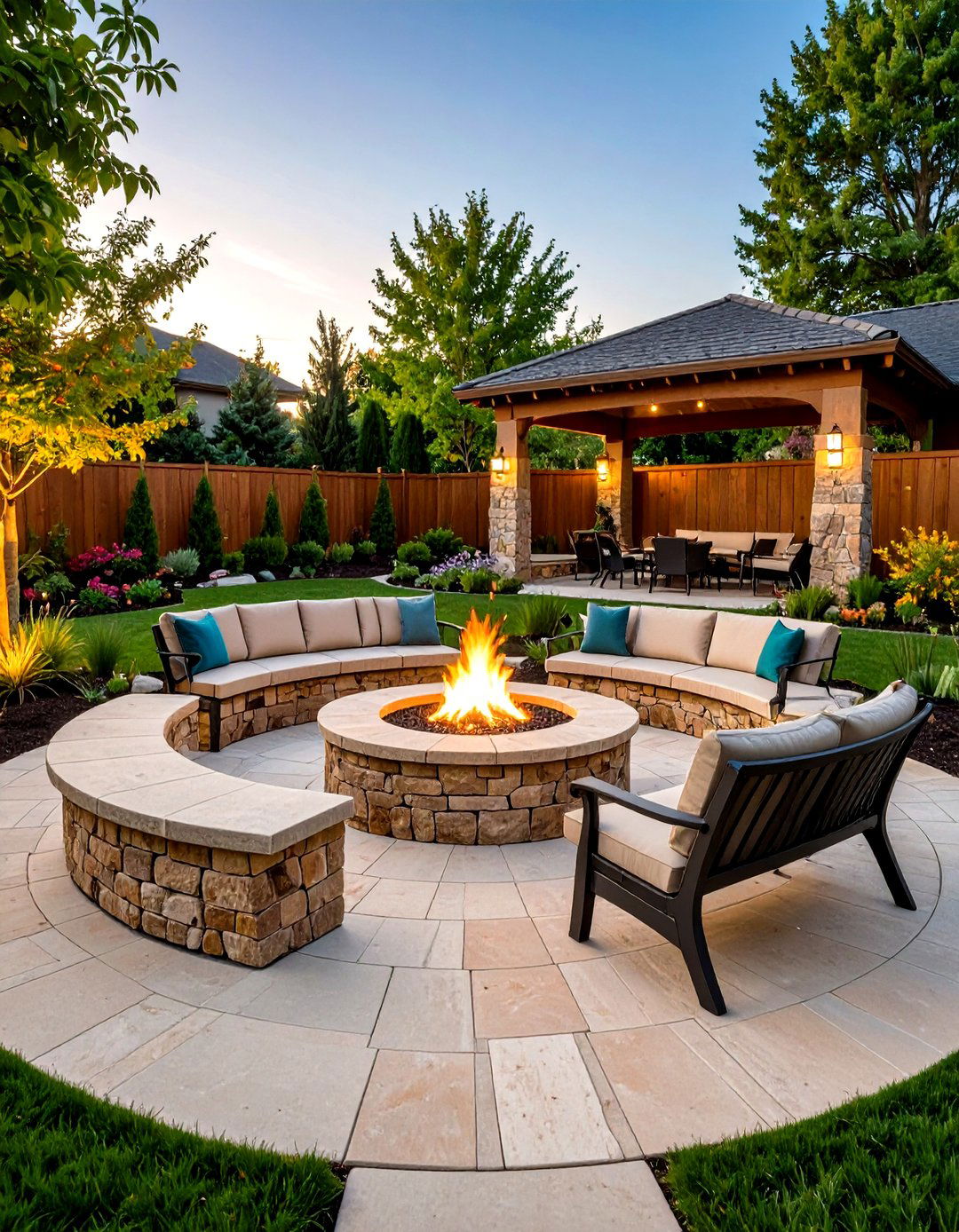
Built-in curved stone benches integrate seating seamlessly into a porch design. Construct using masonry blocks or slabs shaped to form a gentle arc, offering both function and sculptural interest. Cap benches with polished stone or wood for comfort. Curved benches work well around fire pits or focal trees, encouraging social gathering. Finish with cushions that complement the stone’s natural color for a cozy, personalized touch.
17. Stone Pathway Transitions
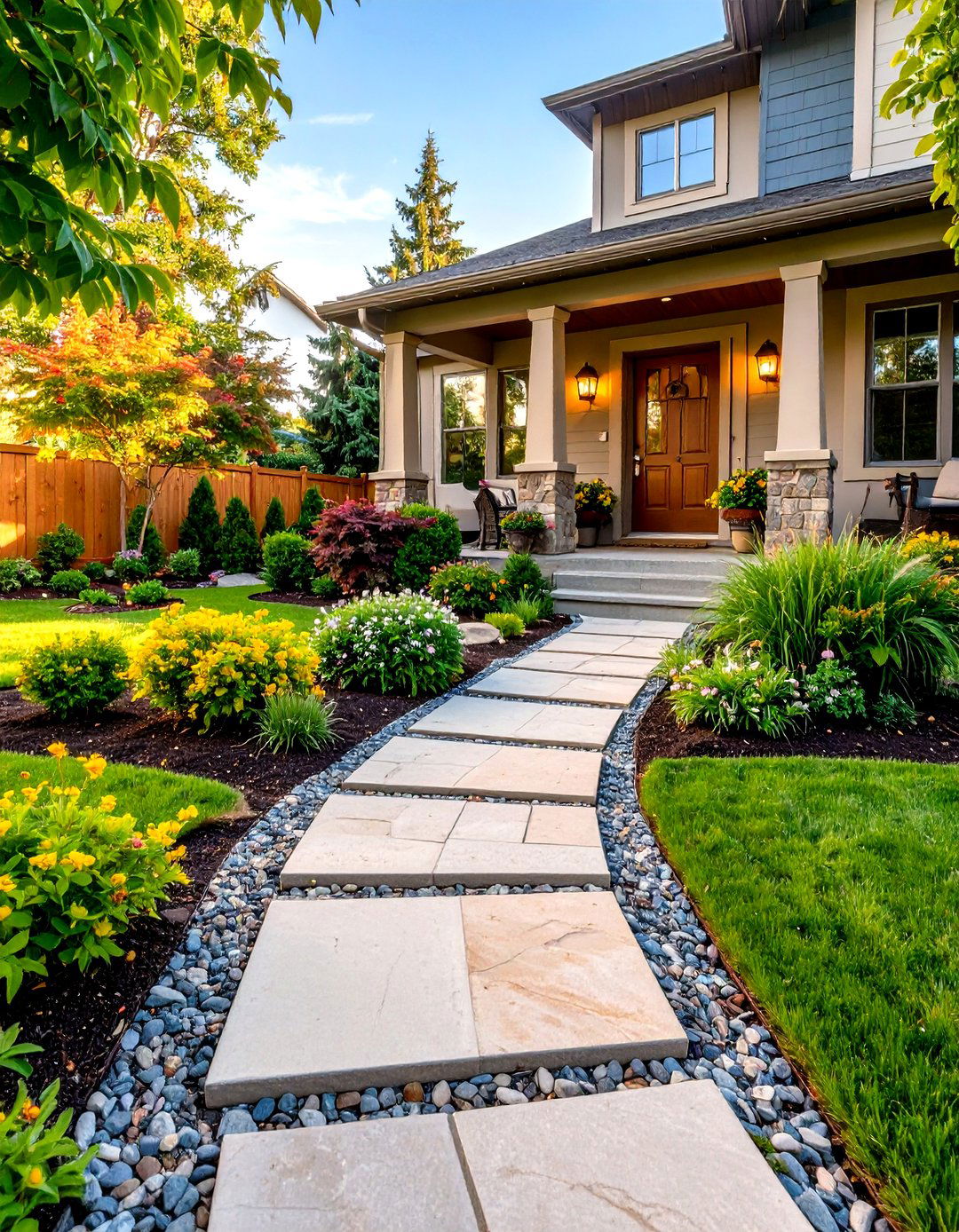
Connect your stone porch to walkways with coordinated stone pathways. Use the same material—such as limestone slabs or flagstone—to create visual continuity. Alternate stepping-stone sizes with groundcover planting between them for a garden-integrated look. Edging the pathway with low mounting stones or steel creates a clean line. This transition guides guests naturally from garden to porch while reinforcing the porch’s material palette.
18. Stone Planter Boxes
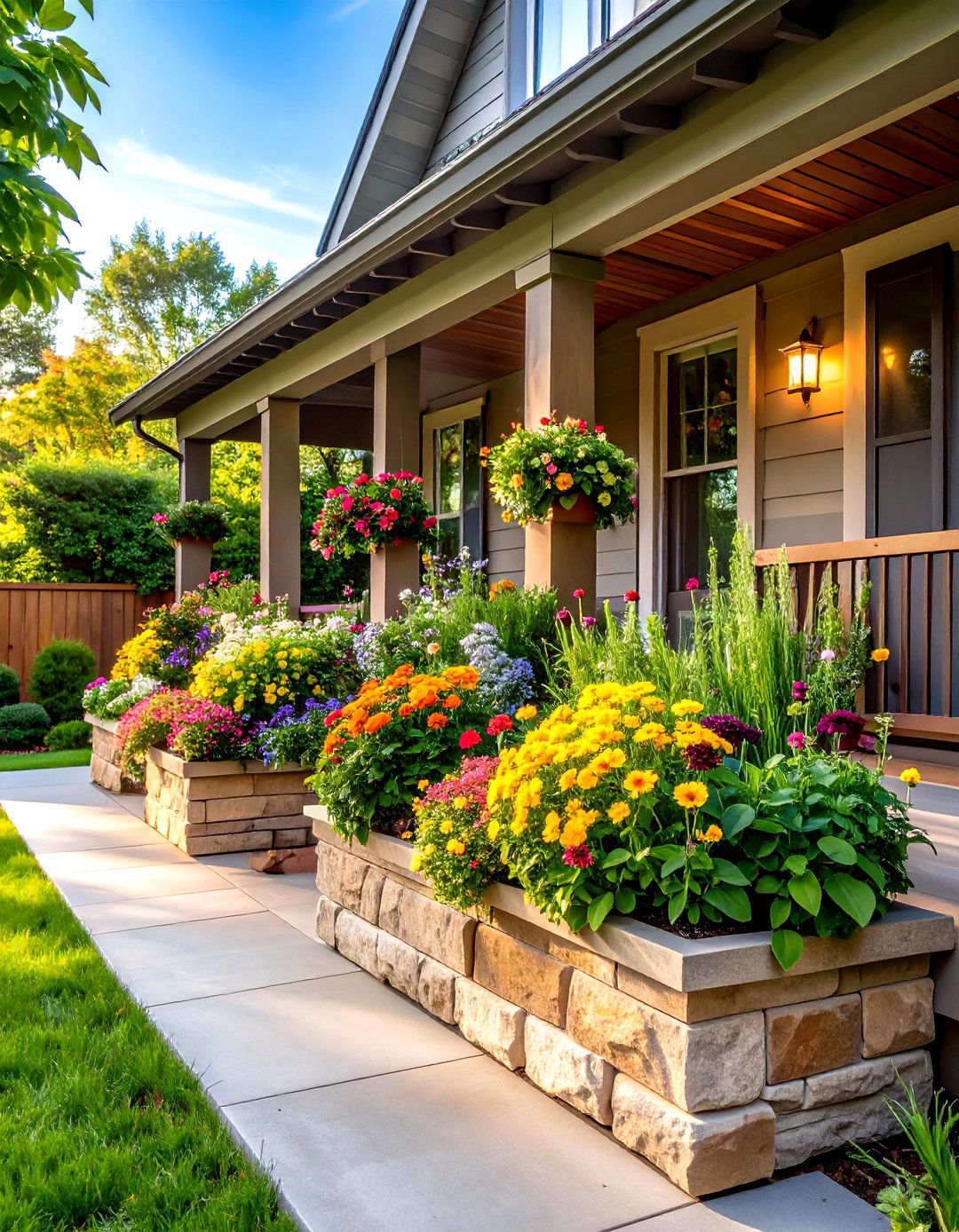
Incorporate raised stone planter boxes at porch edges to frame the space with greenery. Stack stone blocks or veneer panels to form box walls, filling with soil for flowers, herbs, or small shrubs. Planters soften the stone’s hardness and introduce seasonal color. Coordinate planter stone with porch flooring or columns for cohesion. Consider integrated irrigation channels or drip systems to maintain plant health with minimal effort.
19. Integrated Stone Lighting
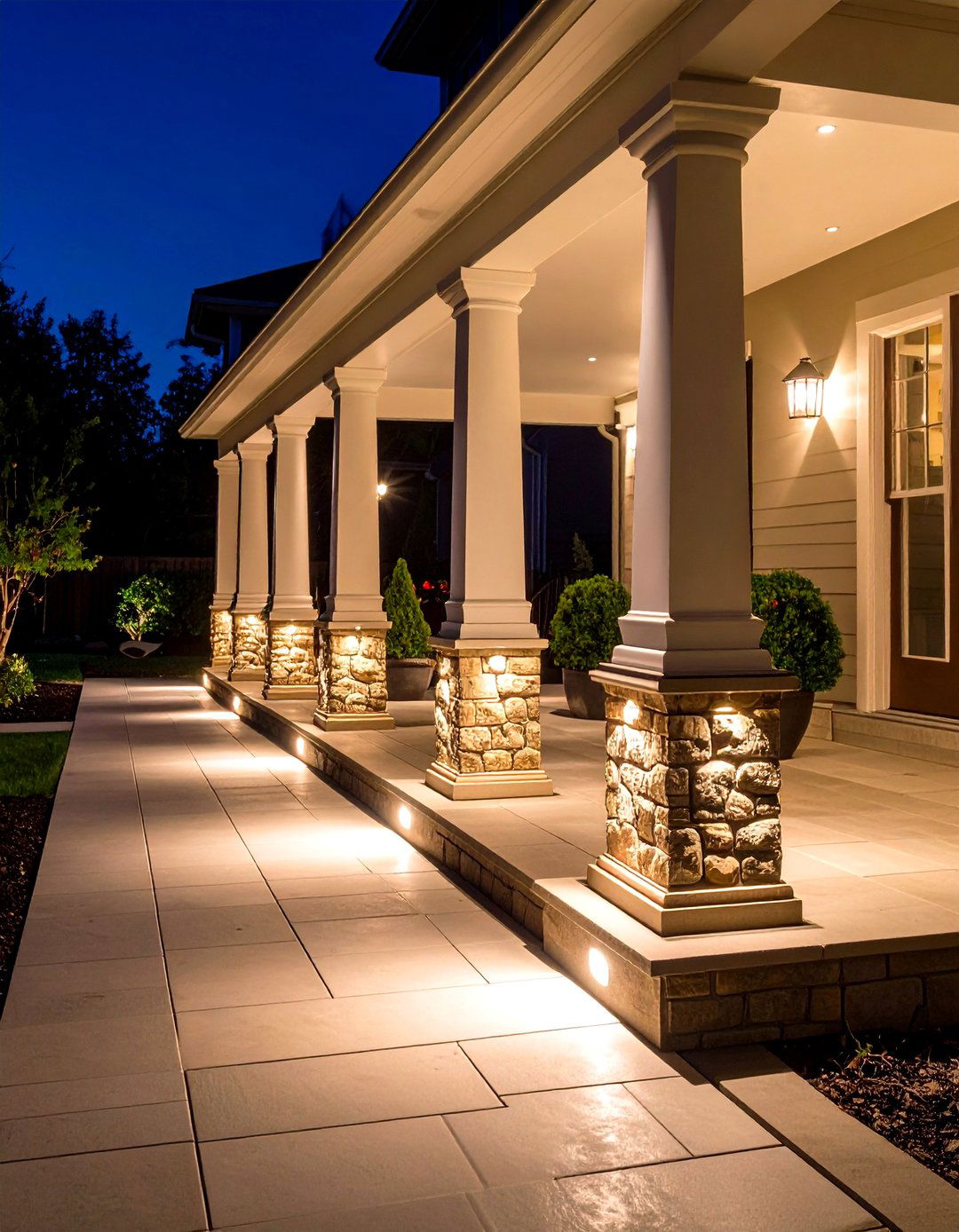
Embed low-profile stone bollards or step lights within porch steps and pathways for safe nighttime navigation. Alternatively, install uplights at the base of stone columns to wash their textures in dramatic light. LED strips set into mortar joints between stone slabs can create a modern glow. Ensure waterproof fixtures and consider wiring during initial masonry work for seamless integration. Thoughtful lighting extends porch usability and highlights architectural features after dark.
20. Stone and Metal Railings
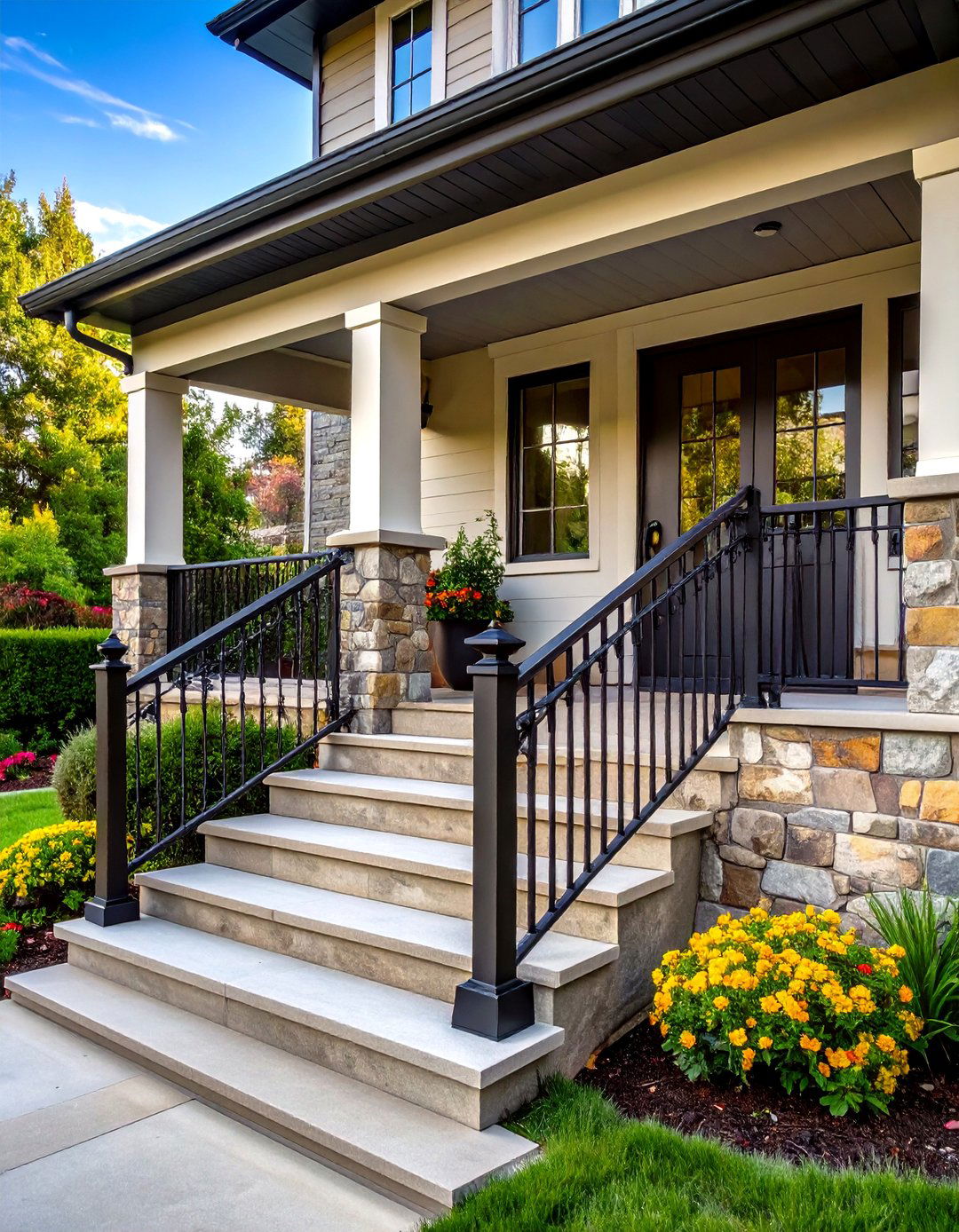
Combine stone bases or half-walls with metal railings—such as wrought iron or steel—for a balance of solidity and openness. Stone plinths anchor metal balusters, providing sturdy supports and textural contrast. Choose metal finishes in black or bronze to harmonize with natural stone tones. This fusion suits transitional and contemporary homes alike, offering safety without compromising sightlines or style.
Conclusion:
From foundational flooring options like flagstone and cobblestones to decorative features such as stone-clad fireplaces and integrated lighting, these 20 ideas demonstrate the versatility and enduring appeal of stone porches. Whether you favor rustic river rock for a cabin-inspired retreat or sleek limestone slabs for a modern entry, each design can be tailored to your home’s architectural context and your personal taste. By thoughtfully combining stone with complementary materials—wood, metal, or greenery—you can create a porch that not only enhances curb appeal but also provides a durable, welcoming space for seasons of enjoyment.




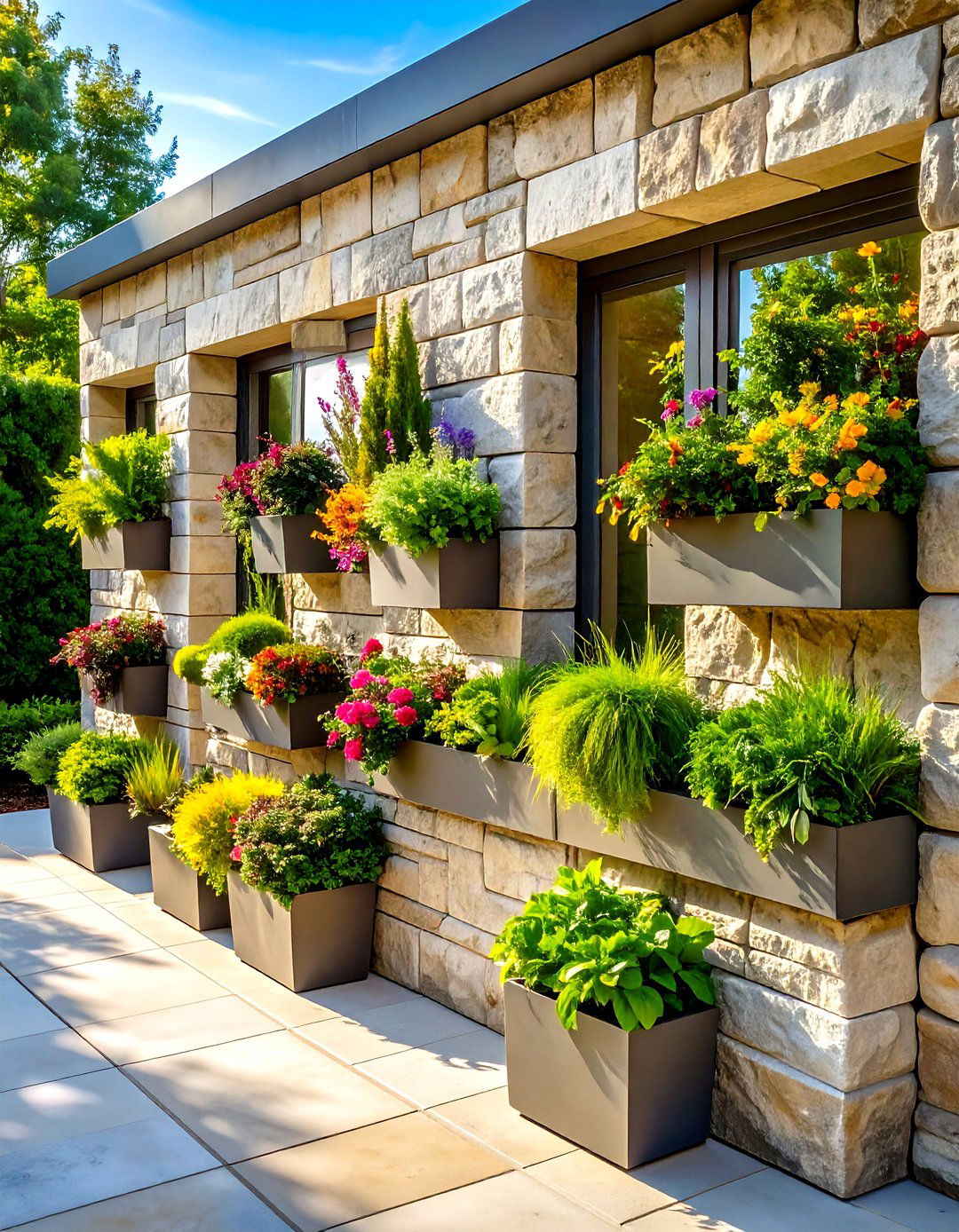


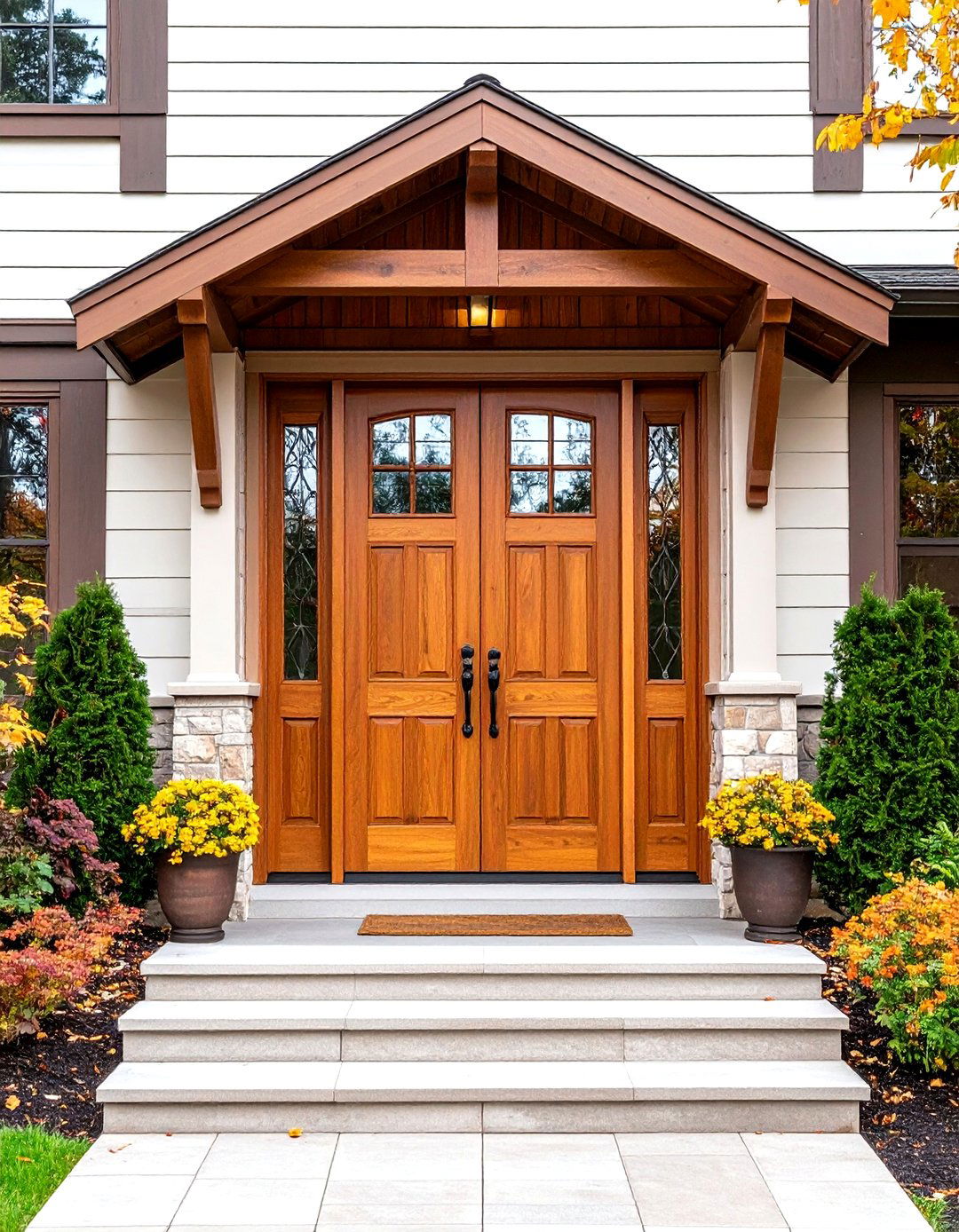

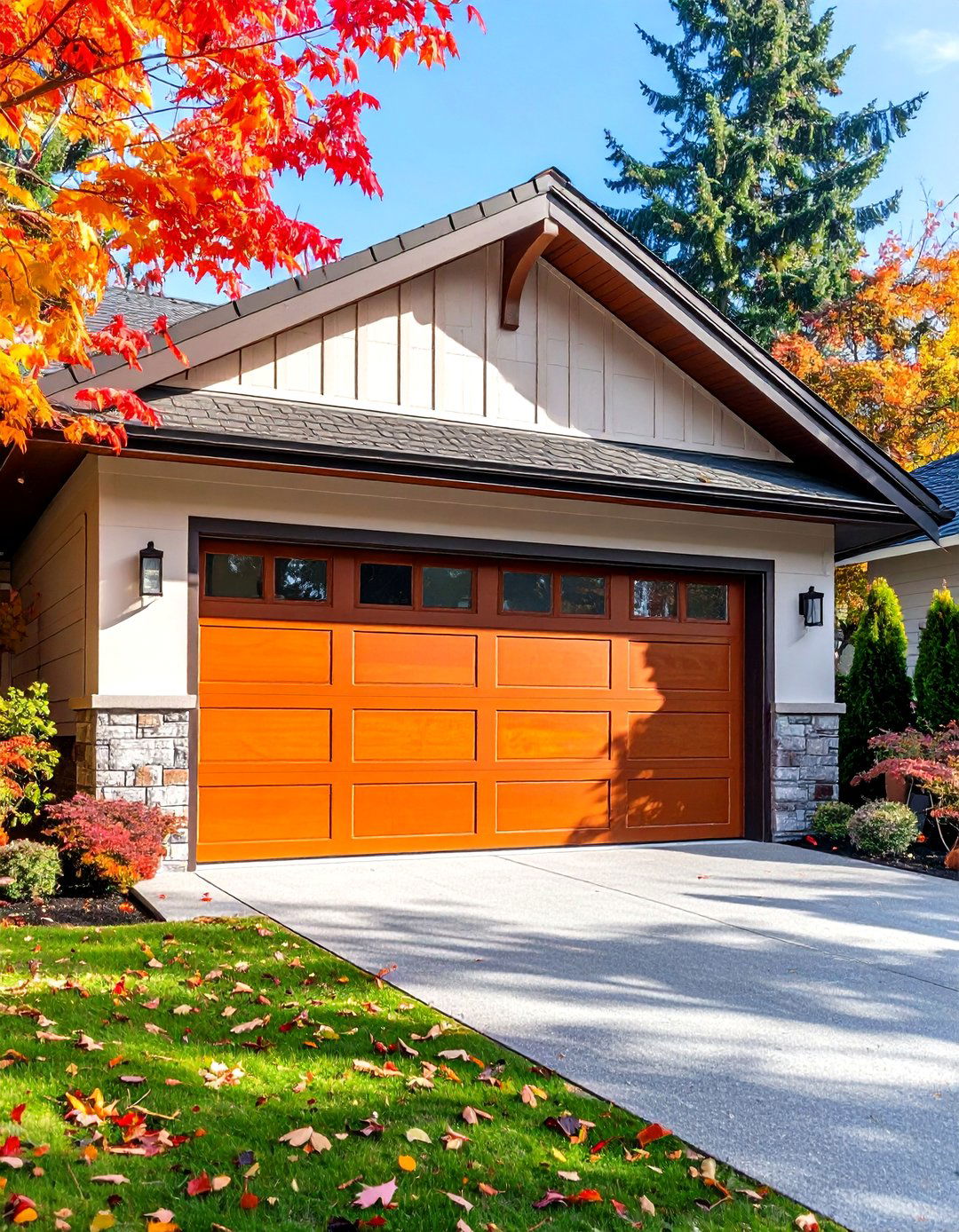
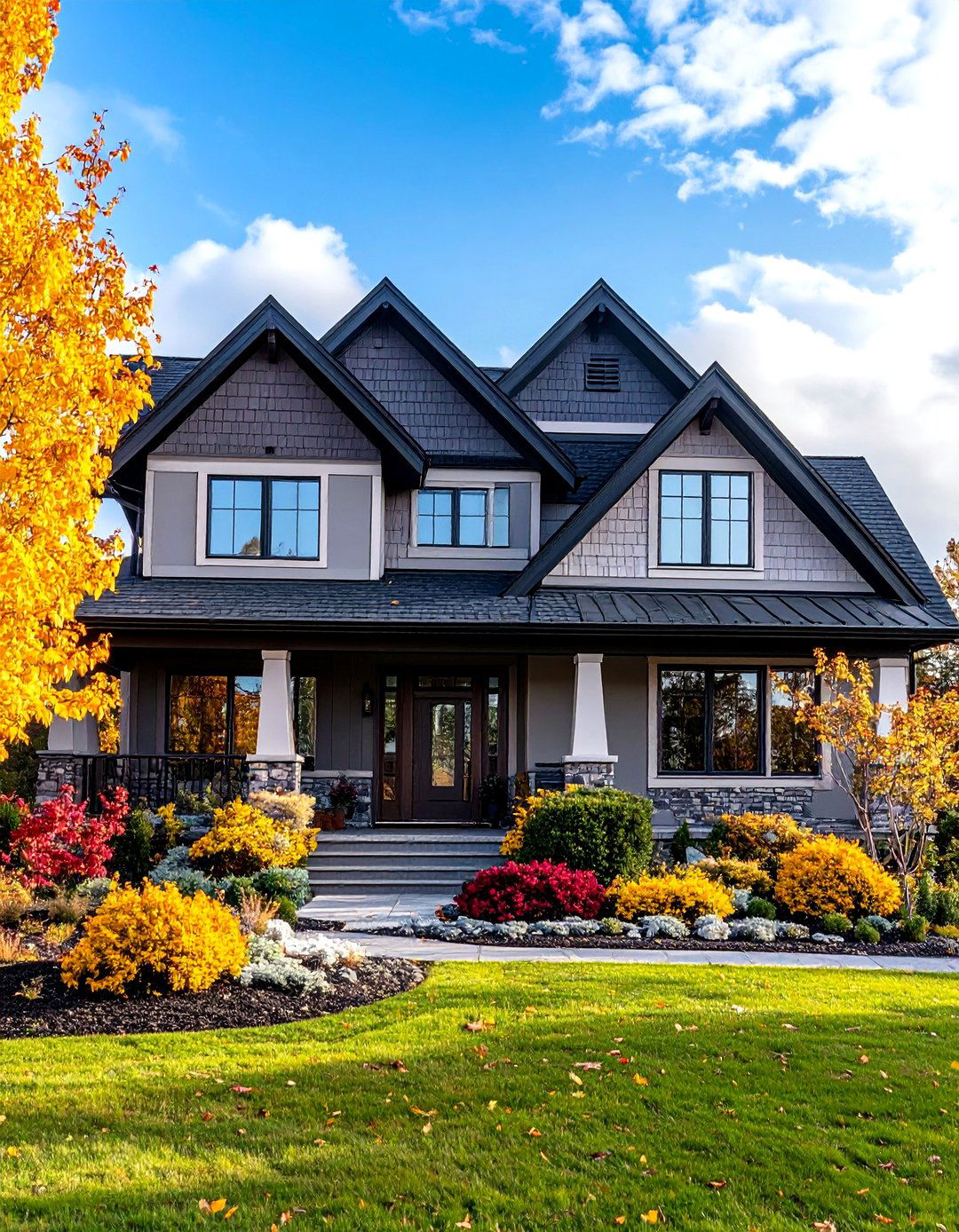
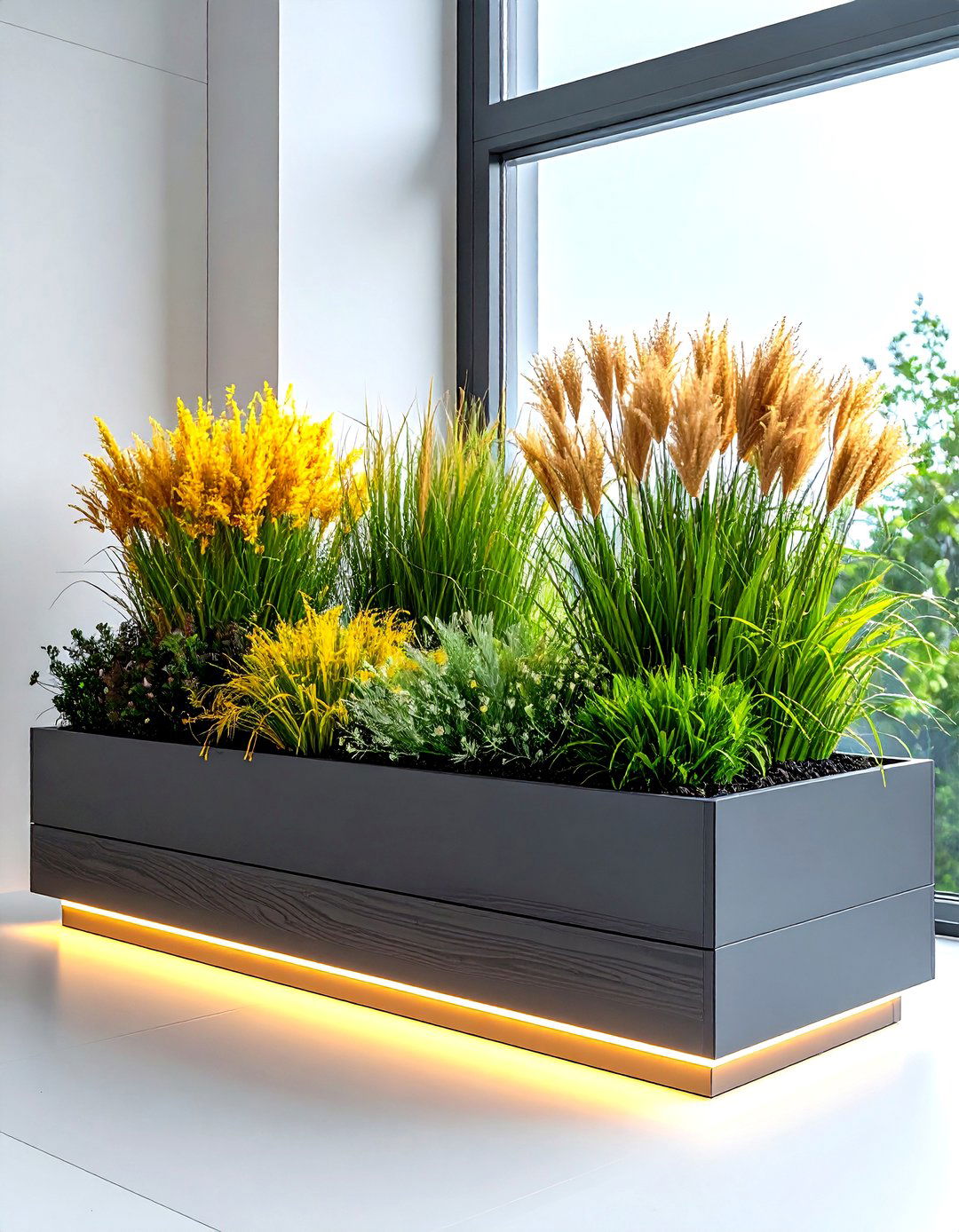
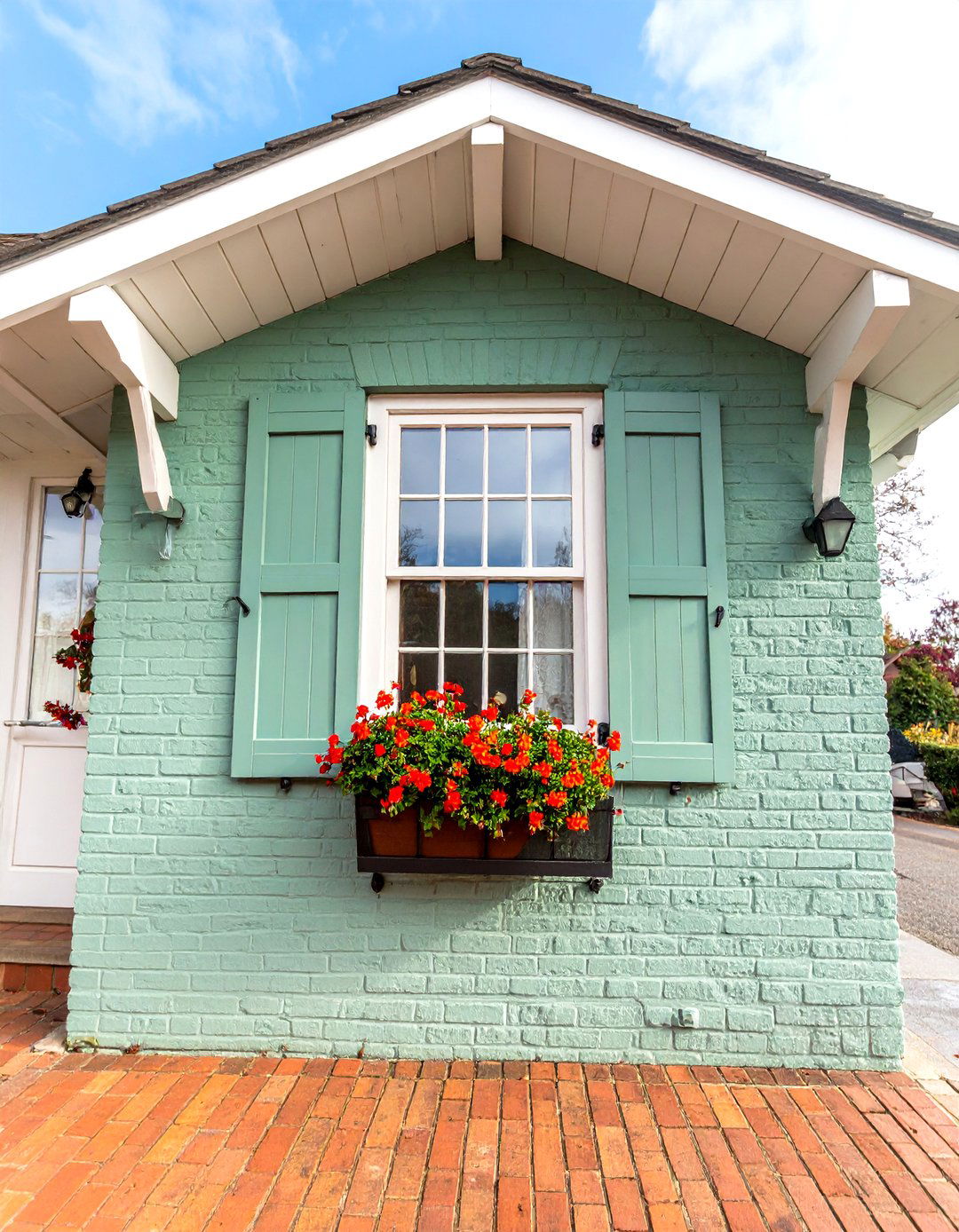

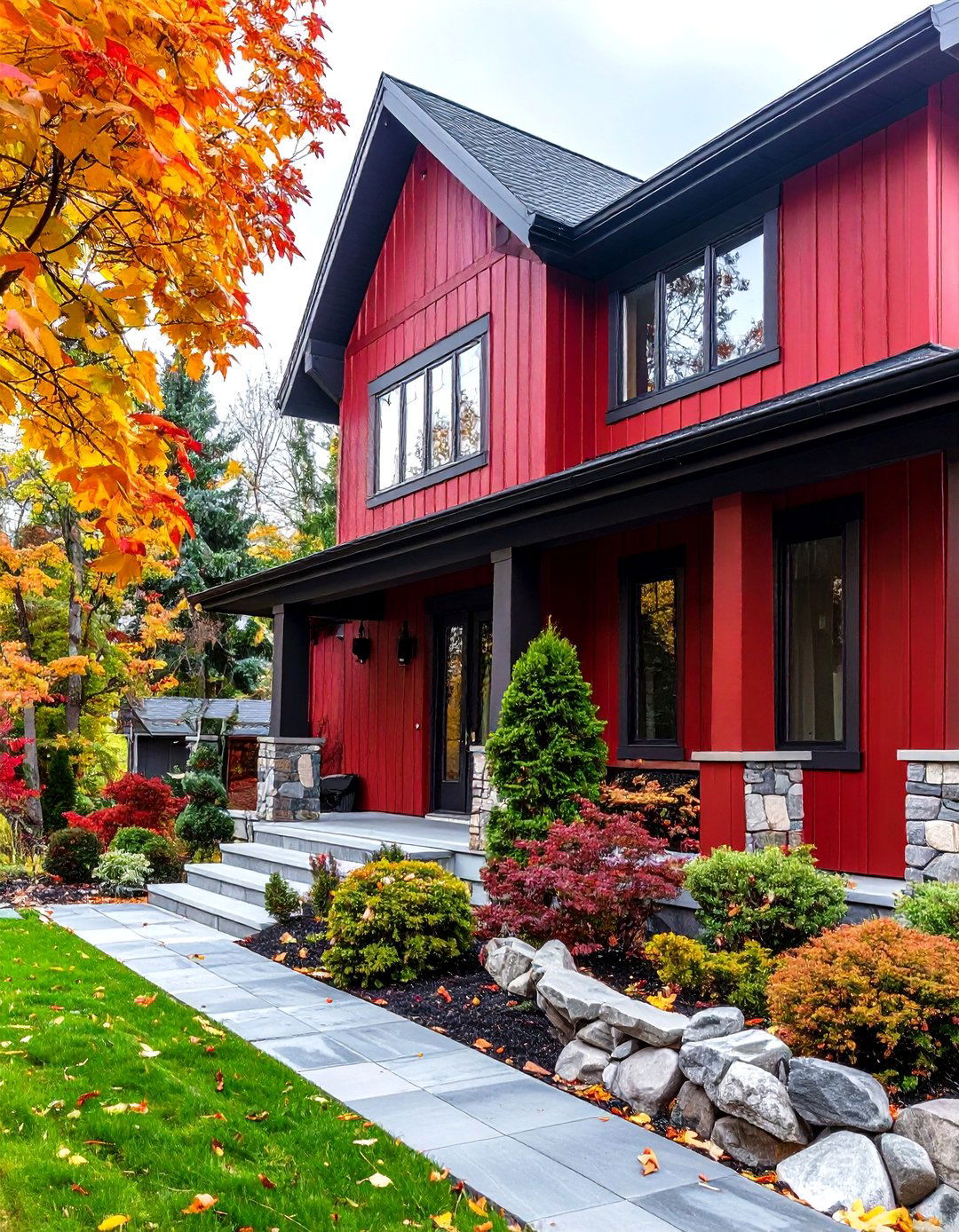
Leave a Reply